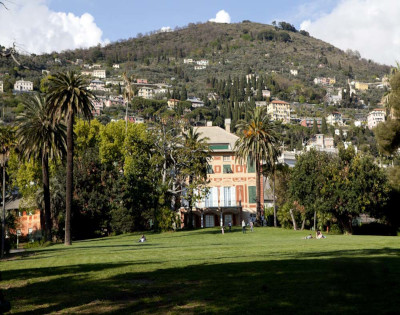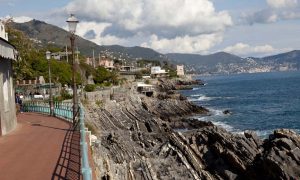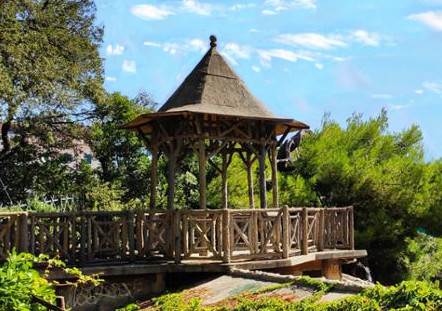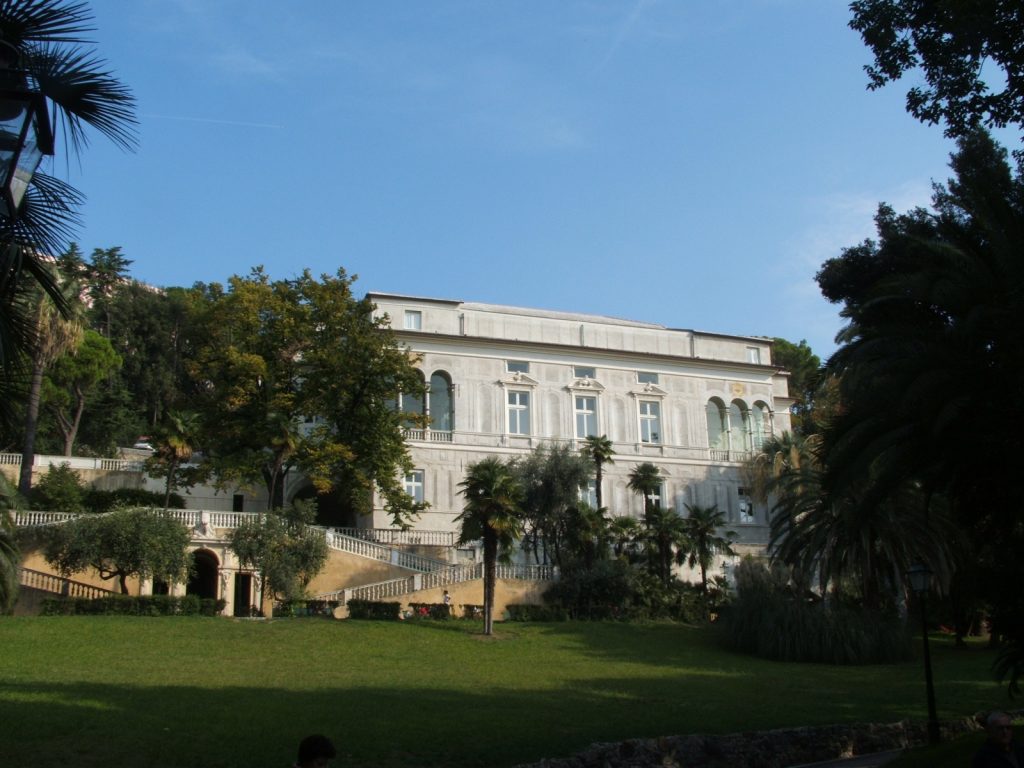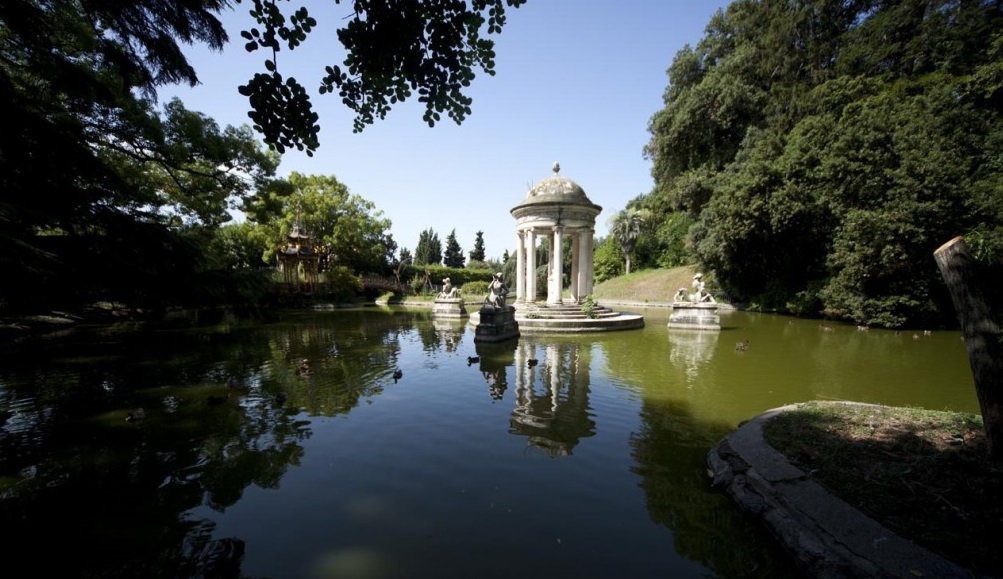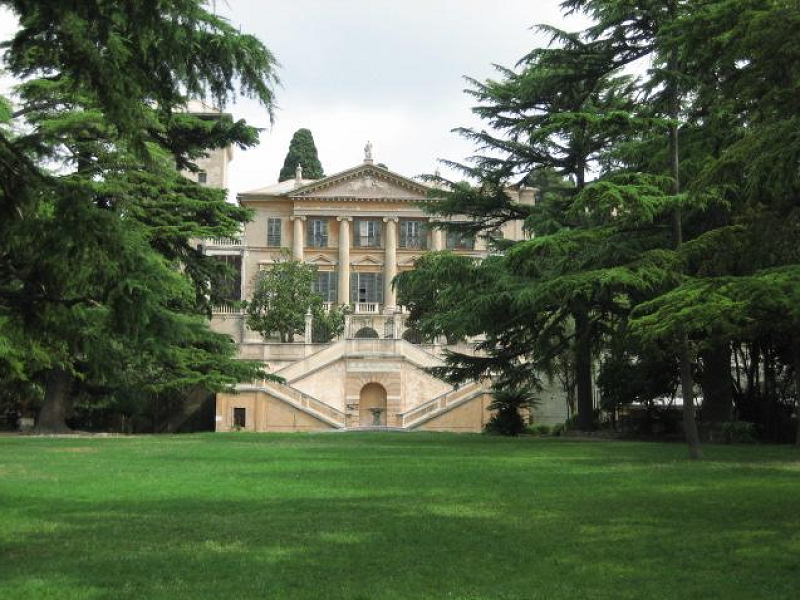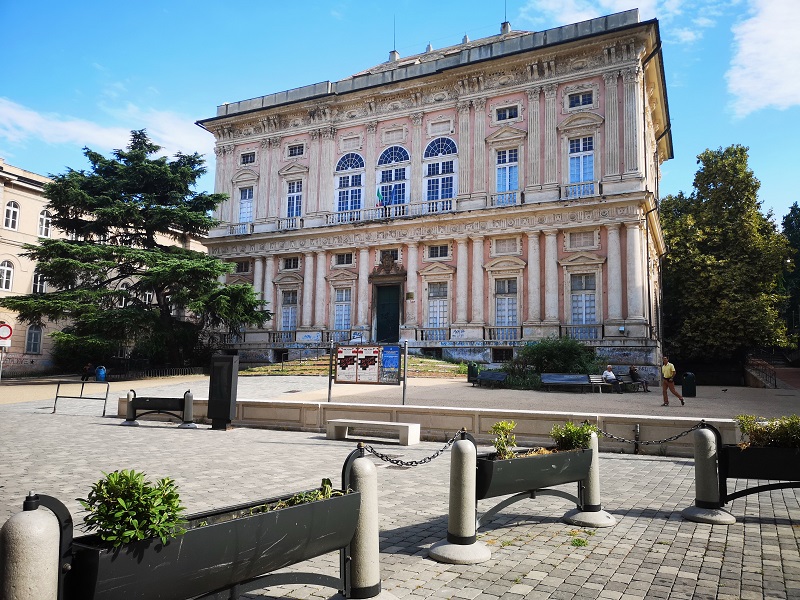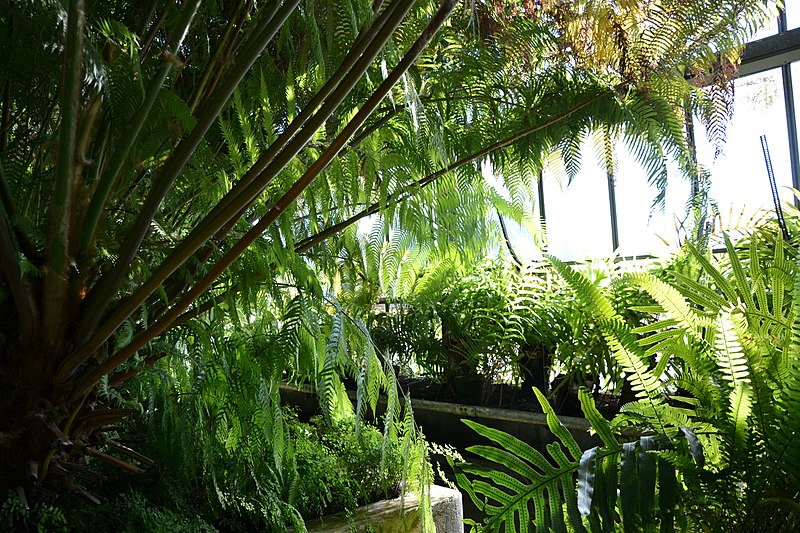The Nervi Parks are the green lung of the Genoese east and represent one of the most evocative places in the city: the main entrance is located near the Genoa Nervi railway station and extends from the Via Aurelia to the Capolungo district (go to route 11).
They overlook the Anita Garibaldi promenade and offer unforgettable views over the Gulf of Genoa to the Portofino Promontory.
They are made up of several gardens, which once belonged to the villas Gropallo, Saluzzo Serra, Grimaldi Fassio and Luxoro, now home to the Nervi Museums. They also host important cultural and industry events.
Walking in the english lawns, along the paths full of palm trees, rare and precious trees, fountains, observing the famous rose garden is like taking a journey back in time into the life of the aristocrats who lived in the villas.
Villa Gropallo, built in the 18th century and renovated in the mid-19th century by the Marquis Gropallo as a country residence, hosted personalities of the caliber of Gabriele D’Annunzio and Eleonora Duse. It is surrounded by an evergreen Mediterranean forest, with holm oaks, historic palms and ancient exotic plants, eucalyptus with pendulous leaves and peeling bark. Today it is home to the Brocchi Library and the Nervi Carabinieri Station.
Villa Saluzzo Serra, built in the sixteenth century, originally belonged to the Romeo family and then to the Saluzzo marquises. Among the illustrious personalities who visited the villa we remember the daughter of King Ferdinand IV of the Two Sicilies Luisa Maria Amalia , the King of Prussia Frederick William, the Queen Maria Christina of Spain and the French historian Jules Michelet. Near the villa Saluzzo Serra there is the presence of a noble chapel, a vast lawn within an English garden with streams that flow under cypress trees, stone pines, holm oaks, laurels and carob trees. Also worth mentioning are a white cedar, palm trees, a cork oak, olive trees, cedars, hazelnuts, laburnums, oaks, horse chestnuts, camellias. Since 1928 the villa has housed the Modern Art Museum.
Villa Luxoro, built in 1903 as the summer residence of the Luxoro family, is the most recent among those present within the Nervi Parks. In its park there are pines, palms, carob trees, cypresses and various Mediterranean vegetation and today it is a Luxoro residence-museum, which preserves many works of both figurative and applied art.
Villa Grimaldi Fassio was most likely built in the 16th century; today it is home to the Frugone collections.
Next to the villa there is an old deconsecrated chapel dating back to the second half of the 18th century and in the eastern part of its park there is a large rose garden of approximately 6,000 m2, which hosts over 200 varieties of plants and is divided into thematic areas: the ancient rose garden, the modern rose garden, the competition rose garden. The rose garden is enriched by a collection of citrus fruits.

